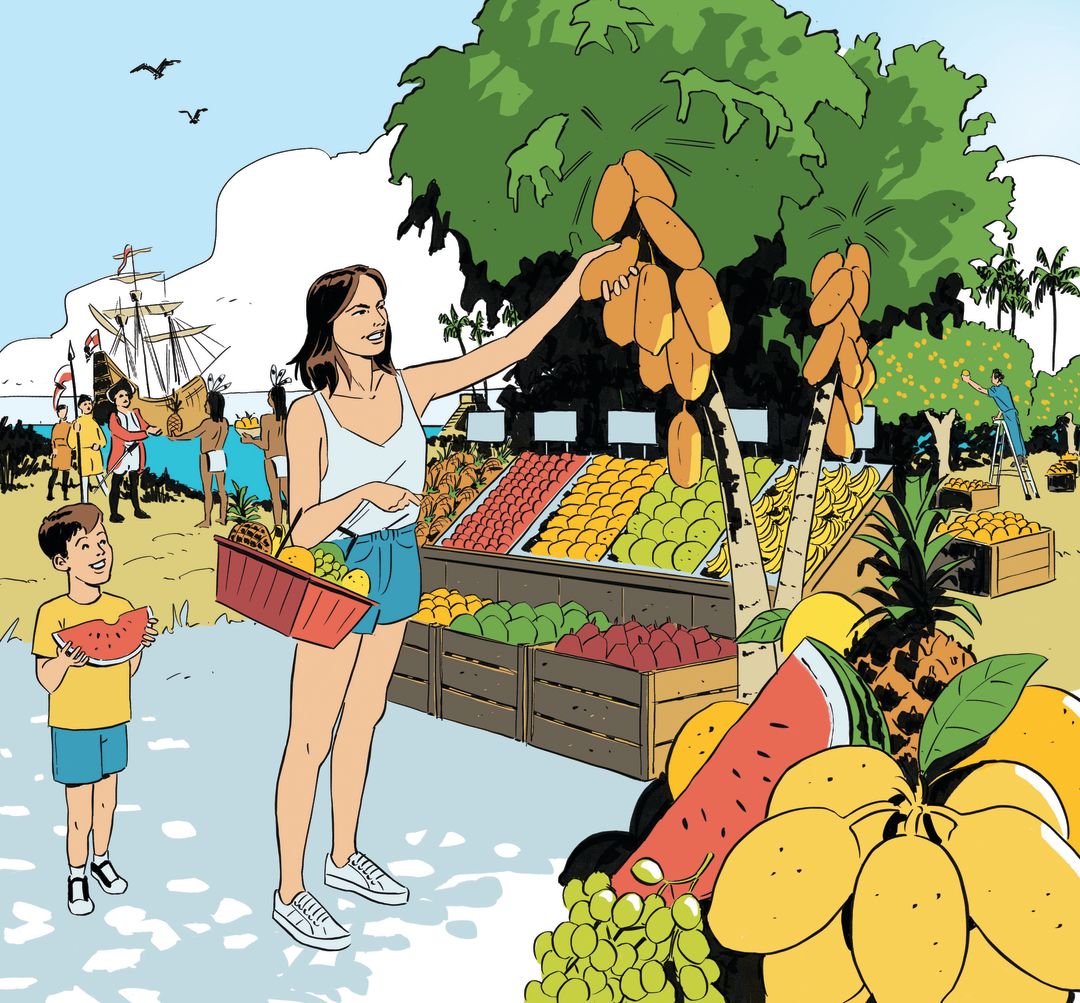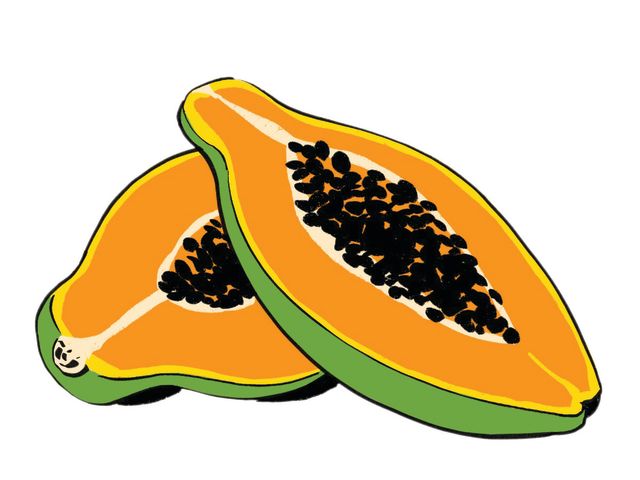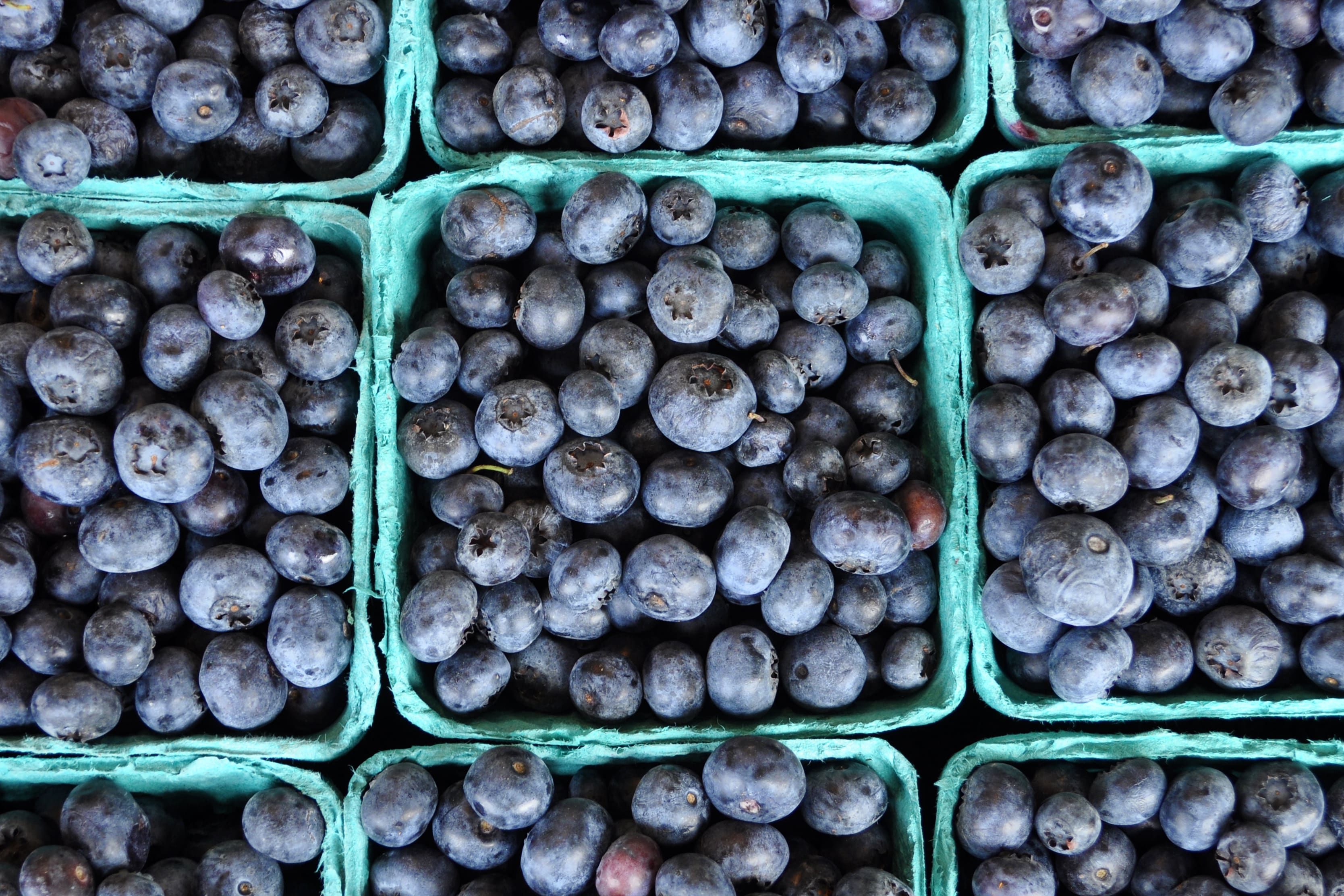Turn Your Backyard Into a Paradise of Tropical Fruit

Image: Jack Richardson
Columbus and other early voyagers to the Americas filled their travel journals with breathless descriptions of the tropical fruits they’d never seen before: avocados, papayas, pineapples, soursop, guava, pitahaya and atemoya, to name just a few. “I see a thousand sorts of trees, each with its own species of fruit,” Columbus wrote in his journal of the first voyage to the Americas.
Today you don’t have to go any farther than the supermarket to find those exotic treasures of the American tropics, not to mention all the fruit that originally came from the farther shores of Asia—bananas, coconuts, mangoes, lemons, limes, oranges and more. Better still, you can grow them all at home. Nature may not have endowed Florida with many fruit trees of its own, but she blessed the peninsula with an excellent climate for turning your back yard into a little paradise of tropical fruit, familiar and strange, from around the world.
There are plenty of nurseries and tropical fruit experts in Sarasota, Crowley Nursery and Gardens and SweetSong Groves among the best. Both have ample selections of tropical fruit trees, and their staffs can help you choose the right plants for your home or area and answer important questions about how to plant and fertilize, how to prune, how to prevent diseases and insect pests, growing in containers, harvesting and more.

Mango
Image: Jack Richardson
Of course, growing tropical fruit takes a bit of imagination, planning and work, but the rewards are tangible, delectable, enchanting: the intoxicating perfumes of flowers and fruit drifting through your garden and the open doors and windows of your home; the green scent of tropical foliage after a rain; the perfectly ripe, fresh, nourishing and delicious fruit you can eat right off the tree or put on your family’s table.
What’s more, regular gardening is simply good for your physical and mental health. Just about every gardener will tell you gardening inspires a deep sense of wonder, contentedness and well-being. You could call that spiritual nourishment.
Knowing something about the history of the fruit has its pleasures, too. The avocado, for example, originated somewhere in Mexico or Central America. We get our word for the fruit from the Aztec ahuacatl. Florida produces mostly the green, smooth-skinned variety sometimes called a butter pear because of its creamy flesh. California produces more Hass avocados, also known as the alligator pear because of its dark, bumpy crocodilian skin.

Papaya
Image: Jack Richardson
The papaya originated in the American tropics, too. The Mayans offered it as a gift to one of the first parties of Spanish explorers to go ashore on the Yucatan peninsula of Mexico. Later Spanish and Portuguese seafarers transplanted it across the Atlantic and Pacific oceans so that today the fruit thrives in tropical regions everywhere.
We actually have a written record of the first known encounter between a European and a pineapple. After going ashore on the Caribbean island of Guadaloupe in 1493, Columbus wrote that he’d seen a fruit he called piña de las Indias, “pine of the Indies”—”pine” because the pineapple resembles a pinecone, and “Indies” because he still thought he’d found a passage to the East. The pineapple was so rare in Europe for such a long time that King Charles II had his portrait painted with the first one grown in England.
You can always go to the store and pick up an abundance of tropical fruit from around the world, but to grow it in your own back yard—that’s to have the taste of the tropics in sight and at your fingertips every day. Growing tropical fruit from around the world at home, you inscribe yourself in a long tradition of cultivating plants from one part of the world in another.
The fruit that made Florida more famous than any other is itself a transplant—the orange. Spanish conquistador Ponce de Leon probably planted the first trees around St. Augustine sometime in the early to mid-1500s. He might have figured he’d sooner get a glass of freshly squeezed Florida orange juice than a drink from the Fountain of Youth. With a little help from local tropical fruit nurseries and other experienced gardeners in the region, your drink could be passionfruit or guava.
Tropical Fruit Resources
Books
Create Your Own Florida Food Forest, David the Good
Florida Fruit & Vegetable Gardening: Plant, Grow, and Harvest the Best Edibles, Robert Bowden
Florida’s Best Fruiting Plants, Charles R. Boning
Growing Tasty Tropical Plants in Any Home, Anywhere, Byron E. Martin and Laurelynn G. Martin
Plant Societies
Manatee Rare Fruit Council: Rare Fruit Council International Inc., Manatee County Chapter, P.O. Box 1656, Bradenton
Florida Native Plant Society, P.O. Box 278, Melbourne; (321) 271-6702
Tropical Fruit Society of Sarasota: The Society meets every fourth Tuesday of each month at the Sarasota Garden Club from 6:30 p.m. to 8:30 p.m.; tropicalfruitsociety.org
Gardens, Growers and Gleaners
Crowley Nursery and Gardens: 16423 Jomar Road, Sarasota; (941) 322-0315
Marie Selby Botanical Gardens: 900 S. Palm Ave., Sarasota; (941) 366-5731
Sarasota Garden Club: 1131 Boulevard of the Arts, Sarasota; (941) 955-0875
SweetSong Groves: 3820 Myrtle St., Sarasota
Suncoast Gleaning Project: P.O. Box 1861, Sarasota; (941) 702-4769
Troy’s Tropics, 5212 Proctor Road, Sarasota; (941) 923-3756
Your Farm and Garden, 735 S. Beneva Road, Sarasota; (941) 366-4954



